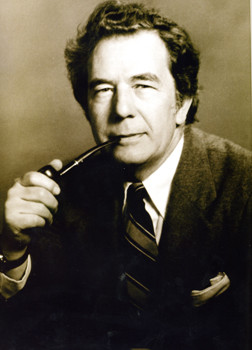Portraying Princeton History and More, Jean Lareuse Embraces Past and Present


AT THE BATTLE MONUMENT: Artist Jean Lareuse’s 1998 ceramic with portraits of Generals George Washington and Jean Baptiste Rochambeau, is at the foot of Princeton’s Battle Monument.
Artist Jean Lareuse was born in 1926 to Catalan parents in French Guiana, Africa, and while his career has been international in scope, he has left his particular stamp on one of Princeton’s favorite historic sites: the Princeton Battle Monument adjacent to Morven and Borough Hall.
A ceramic frieze created by Mr. Lareuse in 1998 and located at the foot of the Monument, commemorates the August 31, 1781 meeting in Princeton of the army of King Louis XVI, commanded by General Rochambeau, and the army of General Washington, during their march to victory in Yorktown. The work was commissioned by the American Society of Le Souvenir Français, and French officials were present at its dedication. Mr. Lareuse’s wife, Caroline, was included in the day’s celebration, having been invited to join the Honorary Committee of the French Consulate in New York City.
Longtime residents of Princeton, the Lareuses live in an art-filled house on Shadybrook Lane. Chagall, Mr. Lareuse’s favorite painter, is well-represented along with Miró and Picasso, who was friends with Mr. Lareuse’s father. Other shelves are lined with sets of books handed down by Ms. Lareuse’s family, which included several Princeton alumni.
Mr. Lareuse continues to paint — at an admittedly slower pace — in a well-lit, back room of the house. An area of the garage has been designated for packing and mailing paintings, as well as copies of Mr. Lareuse’s books. These include a heavily illustrated catalog, Jean Lareuse: Le Plus Catalan des Peintres Américains (The Most Catalan of all American Painters); a tribute to his adopted country called L’Amérique, la magnifique (in French); and a children’s book, Devils in the Castle (in English). The artist is looking forward to a new show of his paintings in Toulouse, France, this spring.
Mr. Lareuse’s subjects cast a wide net. His early youth was spent near the Longchamp Racecourse in France, and scenes of jockeys tensely poised above their competing horses is a favorite theme, along with depictions of well-dressed men and women watching in the stands. A later childhood experience, growing up among priests to whom he was sent after his mother’s death, is reflected in a variety of religious images, and include work in stained glass. Still later, the colors used by Impressionists appealed to Mr. Lareuse’s Catalan sensibility. A recent cataract procedure has restored his passion for bright color after an interval of painting darker pictures.
Mr. Lareuse reported that he actually began painting at the age of 13, and studied in the south of France. He eventually attended the École des Beaux Arts in Paris. His first one-man show, in 1948, was in Paris at the Galerie Ariel, and his second, also in Paris, at the Galerie Drouant-David in 1952. Since then, he has taken part in many group shows, including the Biennale de Menton and the salon d’Automne. His paintings hang in galleries in London, Caracas, New York, Montreal, and Washington, D.C., among others.
There’s sadness when Mr. Lareuse talks about his mother’s early death (he was six), and when he talks about publishing his children’s book — which is actually related to his mother’s death. While he was sent to a school run by priests, Mr. Lareuse’s sister was sent to a convent school, and Devils in the Castle was inspired by her experiences there. Unfortunately, he said, when it was published in 1979, critics suggested that his images of uniformed girls were based on Ludwig Bemelman’s Madeleine stories. Since the stories that inspired it took place long before Madeleine, perhaps, Mr. Lareuse suggests, Bemelemans copied him.
Mr. Lareuse will be appearing at Labyrinth Books next spring at a time to be announced. In the meantime, signed copies of Jean Lareuse: Le Plus Catalan des Peintres Américains are available by calling Labyrinth at (609) 497-1600.

